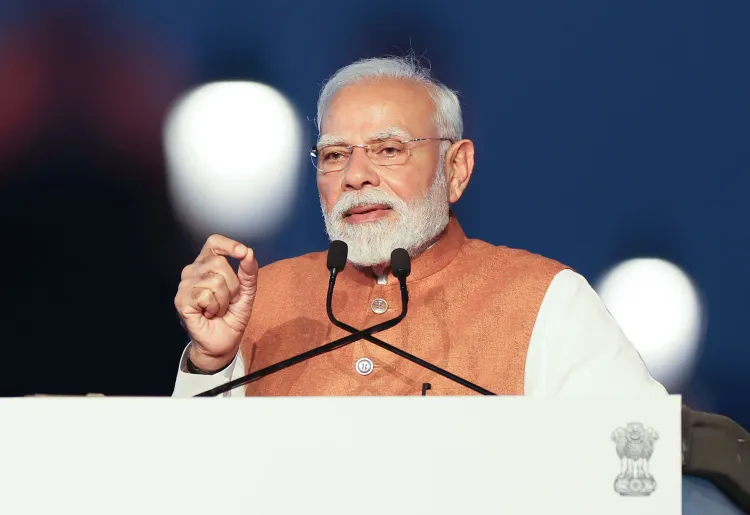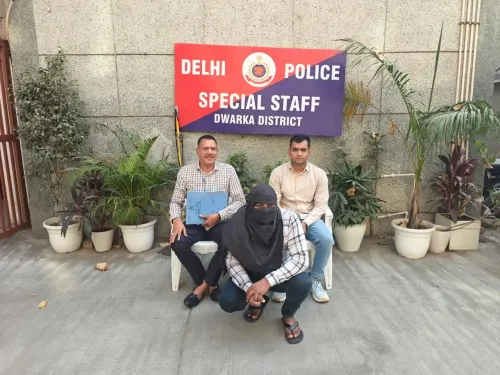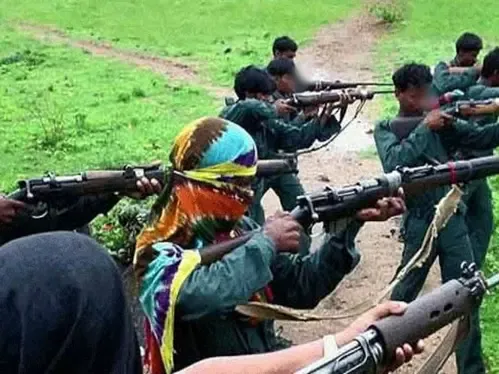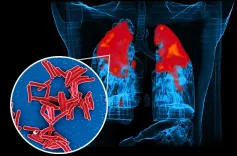Is Kartavya Bhavan the Key to Improving Administrative Efficiency?

Synopsis
Key Takeaways
- Kartavya Bhavan-3 inaugurated to enhance administrative efficiency.
- Part of the Central Vista redevelopment project.
- Features eco-friendly technologies and advanced workspaces.
- Reflects a commitment to citizen-centric governance.
- Set to improve inter-ministerial coordination.
New Delhi, Aug 6 (NationPress) Prime Minister Narendra Modi on Wednesday officially opened Kartavya Bhavan-3 at Kartavya Path, marking a significant step in the government’s dedicated efforts to overhaul India’s administrative framework and foster citizen-focused governance.
This newly launched facility is the pioneer among several structures proposed under the Common Central Secretariat initiative, conceived as part of the Central Vista redevelopment strategy.
While addressing the audience, the Prime Minister hailed the inauguration as a “historic milestone” occurring just before Independence Day, signifying a new era in the evolution of modern India.
“August, a month synonymous with revolution, has ushered in yet another significant milestone ahead of 15th August,” he remarked, adding that India is observing essential milestones in the journey towards a modern nation.
Referring to Kartavya Bhavan and additional recent infrastructural enhancements such as the new Parliament building, Bharat Mandapam, and Yashobhoomi, the Prime Minister emphasized that these advancements are not merely physical entities.
“During the Amrit Kaal, the frameworks for a developed India will be crafted within these very structures,” he noted. “In the forthcoming decades, the direction of our nation will be shaped from these institutions.”
He conveyed his congratulations to the citizens and expressed his appreciation for the engineers and Shramjeevis responsible for the construction of Kartavya Bhavan.
Expounding on the name, PM Modi explained it was chosen after careful reflection.
“‘Kartavya Path’ and ‘Kartavya Bhavan’ resonate with the fundamental essence of India’s democracy and its Constitution,” he stated, quoting the Bhagavad Gita to highlight the significance of duty over profit.
“Kartavya signifies both the inception and the goal, intertwined with compassion and diligence… the thread of action, the ally of aspirations, and the beacon of resolutions,” he elaborated.
He described Kartavya Bhavan as “the sacred space for fulfilling the aspirations of millions of Indian citizens.”
PM Modi criticized the antiquated infrastructure of ministries that are still functioning from colonial-era buildings like Shastri Bhawan and Udyog Bhawan. He highlighted the inefficiencies stemming from inadequate ventilation, cramped spaces, and logistical hurdles caused by dispersed offices.
“It’s hard to envision how a crucial ministry like the Ministry of Home Affairs has operated for almost a century from a single building lacking adequate infrastructure,” he remarked.
He pointed out that more than Rs 1,500 crore is being spent each year on rent for over 50 government offices scattered across Delhi. The establishment of Kartavya Bhavans, he asserted, will ameliorate working conditions, cut expenses, and boost administrative efficiency.
“India in the 21st century needs 21st-century modern buildings… exemplary in terms of technology, security, and convenience,” he affirmed.
Kartavya Bhavan-3 is a cutting-edge office complex spanning 1.5 lakh sq. metres, featuring two basements and seven floors. It will accommodate key ministries including Home Affairs, External Affairs, Petroleum, MSME, and Rural Development.
It boasts IT-ready and secure workspaces, state-of-the-art HVAC systems, rooftop solar panels, rainwater harvesting, waste recycling, electric vehicle charging stations, and aims for a GRIHA-4 green rating.
“Kartavya Bhavan exemplifies a pro-people ethos and a pro-planet framework,” PM Modi stated, adding, “The vision India is presenting to the world is being embraced domestically as well.”
PM Modi also underscored the broader implications of India’s developmental progress: “While Delhi has seen the rise of the new Parliament building, over 30,000 Panchayat Bhavans have been constructed nationwide… more than 300 new medical colleges, 90 new airports, and 1,300 Amrit Bharat railway stations are under development.”
He reiterated that development is permeating every corner of India, aligning with the government’s comprehensive vision for inclusive growth.
The Prime Minister discussed administrative reforms achieved over the past 11 years, including the repeal of over 1,500 outdated laws and 40,000 compliance burdens.
He highlighted the impact of the JAM Trinity—Jan Dhan, Aadhaar, Mobile—which has helped eliminate nearly 10 crore fraudulent beneficiaries, saving Rs 4.3 lakh crore now being redirected towards authentic development initiatives. “India has cultivated a governance model that is transparent, sensitive, and centered around the citizen,” he asserted.
PM Modi declared that the historic North and South Blocks will be transformed into a public museum—Yuge Yugeen Bharat Sangrahalaya—to exhibit India’s civilizational journey.
“Successful nations do not forsake their heritage but safeguard it. India strides forward with the vision of ‘Vikas aur Virasat’,” he remarked.
The Prime Minister concluded by encouraging public servants to engage with their duties with dedication, awareness, and empathy.
“A file, a grievance, or an application may seem routine, but for someone, that document may signify their greatest hope,” he expressed.
He urged all officials to embody the spirit of Kartavya in every decision, understanding that their actions directly affect millions of lives.
“India’s aspirations for development are nurtured in the cradle of responsibility,” he emphasized.
Kartavya Bhavan-3 is part of the Central Vista redevelopment initiative and the extensive administrative reform agenda aimed at enhancing inter-ministerial coordination and policy implementation. It signifies a substantial advancement towards modern, effective, and environmentally sustainable governance infrastructure.










